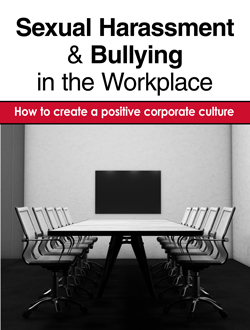Here’s just some of what we’ll cover:
- What is harassment? What is bullying? Discover the truth about “innocent” flirting, banter and teasing
- Communication skills that will help every employee bridge the gender gap and reduce misunderstandings
- How to comply with the very latest legal rulings at the federal, state and local levels
- How to establish grievance procedures that will protect the rights of your employees and your organization
- Your rights and responsibilities as an employer
- How to handle initial complaints and investigations with diplomacy, tact and understanding
This is critical information that could save your organization from a costly lawsuit down the road.
<!--read more-->
Sexual harassment and bullying are growing concerns
Like many professionals today, you probably have questions and concerns about sexual harassment and bullying in the workplace. What exactly qualifies as sexual harassment? What constitutes bullying? Where does seemingly harmless flirting or teasing bantering end, and harassment begin? How prevalent is harassment in today’s workplace? What are the legal rights of individuals and of organizations regarding harassment? How have recent changes in legislation affected corporate policies?
When you attend this compelling, information-rich training event, you will receive answers, guidance, suggestions and up-to-the-minute information about sexual harassment and bullying, along with prevention strategies. Learn about updates related to anti-harassment, get answers to questions, address your concerns and make sure you and your employees have the knowledge you need to prevent harassment and bullying in the workplace.
